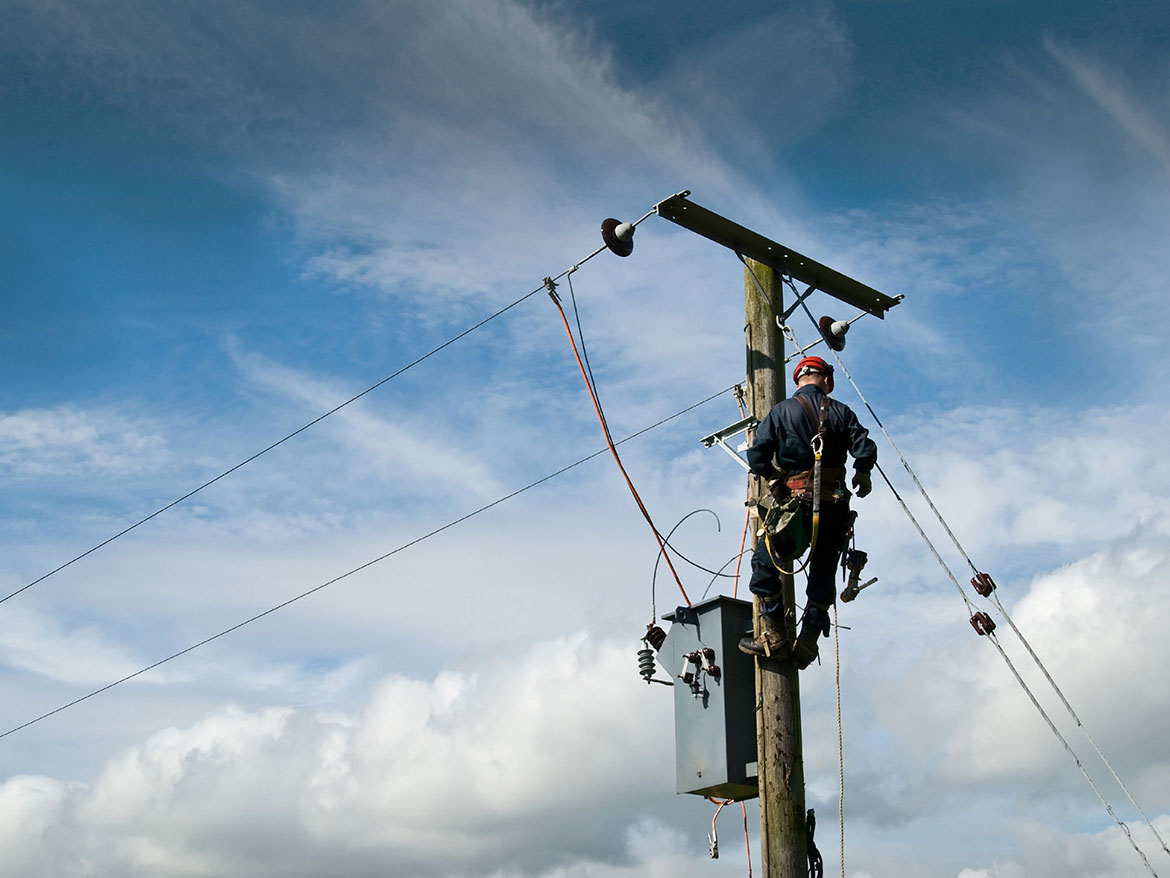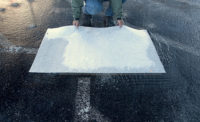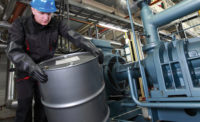Most people don’t give much thought to the electricity that keeps their lights on and heats their homes or workplaces – until that power source is interrupted. Then, even a momentary outage is overdramatically deemed by many as intolerable.
Restoring power typically means sending out crews, often in extreme weather conditions. It may also require coordinating assistance from other utility providers through mutual aid agreements. Whether the outage is contained to one city block or covers several counties, the day’s duties won’t be business as usual.
Although everyone shares the same goal of restoring power as soon as possible, safety cannot be compromised or overlooked during outages just to appease consumer desires. In addition to the hazards that are already present for routine utility work, employee safety accommodations may now also need to be made for longer work shifts, weather conditions, traffic anomalies, working in unusual environments and other uncommon circumstances.
Job briefings
Because of the inherent risks utility workers face, OSHA requires employers to conduct at least one job briefing at the start of the work day or the start of each shift, even if crews are only performing routine work [29 CFR 1910.269(c).] These briefings need to address the hazards that may be present, specific work procedures, special precautions, ways to control energy sources and any personal protective equipment that is required.
These job briefings do not need to be long, but they do need to be based upon hazard assessments that have been performed. They must also be specific to the job duties and conditions that employees will face that day or shift. When conditions or job duties change, a new job briefing must be conducted.
When crews are called out in the middle of a frigid, stormy night; or when they come in early to help restore power to an overworked grid in the middle of an unprecedented heatwave; it can be easy to overlook daily job briefings. It can also be easy to rationalize that the work that the crews are performing is for the safety of an entire community and that time is too precious of a commodity to spend on briefings. OSHA does not allow exemptions to the rule for these or any other excuses.
Hazards Associated with the Job
Working on live power lines is an obvious physical hazard for electrical utility employees, and it does contribute to about 400 non-fatal and 5 fatal injuries each year, according to National Safety Council data. Falls to a lower level account for an additional 370 non-fatal injuries. These are two of the most commonly recognized physical hazards for utility employees.
However, lost worktime injuries from slips, trips and falls to the same level are four times more common among utility workers with more than 1,600 injuries each year. Almost as common are lost worktime injuries due to sprains, strains, soreness and pain caused by overexertion and poor ergonomics (about 1,590 injuries.)
Other physical hazards may include the potential for fires or explosions. Being struck by, coming in contact with or being caught between objects are additional physical hazards that collectively account for more than 1,000 injuries each year. Utility works may also face violence from other people or animals.
Chemical and biological hazards may also be present at job sites. These include activities such as cleaning up or handling PCB-contaminated oil, administering first aid or applying pesticides.
Assessing all of the hazards at job sites helps employees to be more aware of scope of hazards that put them at risk for injuries and illnesses. Correctly identifying the specific hazards that they could face on this particular day or shift, and not overwhelming workers with extraneous scenarios will keep this part of the daily job briefings focused.
Work procedures
Work procedures are likely to be well established for all of the power restoration activities that crews may face. But, if crew members haven’t been involved in restoring power for a while; job briefings are the place and time to review each task that needs to be completed and ensure that everyone is comfortable with their roles. Crews may also need to be made aware of procedures for traffic control and other circumstances that, at first glance may seem to be out their scope of control.
Tasking supervisors or leadership with maintaining situational awareness can help crews avoid confusion and allow them to focus on what needs to be done. Supervisors may also play a key role in ensuring that each crew has clearly prioritized tasks and that they have the training, equipment and anything else that is necessary to complete those tasks.
Special precautions
Chances are good that when power is interrupted, it’s not a beautiful, cloudless spring day with moderate temperatures and gentle breeze. Weather may play a key role in the amount of tasks that can be safely accomplished each day or each shift.
In the summer months, heat and humidity may limit the amount of time crews can safely work. In the winter; snow, ice and wind chill may bring necessitate even shorter time limits. Rain, thunder and lightning can be a limiting factor year-round.
Job briefings should clearly outline work intervals, rests, breaks and time off based upon weather, hazards and any other site-specific conditions. In addition to established government guidelines for weather-based work schedules; consider the acclimation of the workforce, especially if crews have been brought in through mutual aid agreements.
Special precautions may also include hazards specific to a geographic area, such as watching for wild animals, birds or insects that are specific to the region. Reminding everyone about the locations of first aid supplies and who to call for additional help or resources may also be includes when discussing special precautions.
Control of energy sources
The control of hazardous energy for utility crews plays a significant role in employee safety. Daily job briefings need to clearly outline when energy will be isolated and how. The briefing should also identify when energy cannot be isolated and the procedures to follow.
Personal protective equipment
Daily job briefings are a great time to verify not only that everyone is wearing the correct FR clothing and PPE, but also that it is correctly rated for the tasks that they will be performing. It’s also a good time to check the condition of fall protection gear and any other personal protective equipment that will be needed or utilized that day.
Conducting a well-developed daily job briefing doesn’t need to take hours, but when it is done correctly, it will probably take longer than the two minutes that some anxious crew members may want to allow. Focusing on specific hazards and providing a brief rationale for each item discussed can help employees to focus on how each requirement keeps them safe throughout the day while still allowing them to restore power as quickly as safely possible.



